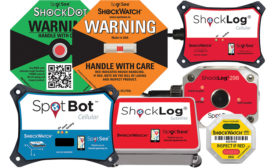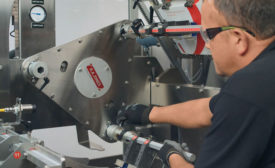Home » Keywords: » RFID technology
Items Tagged with 'RFID technology'
ARTICLES
Market Trends
Reducing Loss in the Medical Supply Chain
Reducing inefficiencies in the supply chain has been a long-standing challenge for companies everywhere.
April 12, 2020
How Smart Labels and Materials are Reshaping Packaging
Packaging Strategies and Flexible Packaging editorial director Kristin Joker and PMMI’s Jorge Izquierdo discuss the rapid development of smart packaging. Part 1 of 6
August 21, 2019
Spotlight Feature
Active & Intelligent Packaging: A New Industry
February Cover Story: Part 1 of 2
February 13, 2019
Materials Technology: Labels
The Intelligence Behind Smart Labels
Labeling technology connects brands and consumers for an enriched experience before, during and after purchase
November 14, 2018
Machinery Technology: Cartoning
Improving Cartoning Changeover Capabilities
Advancements in technology offer packaging machine flexibility.
October 10, 2018












